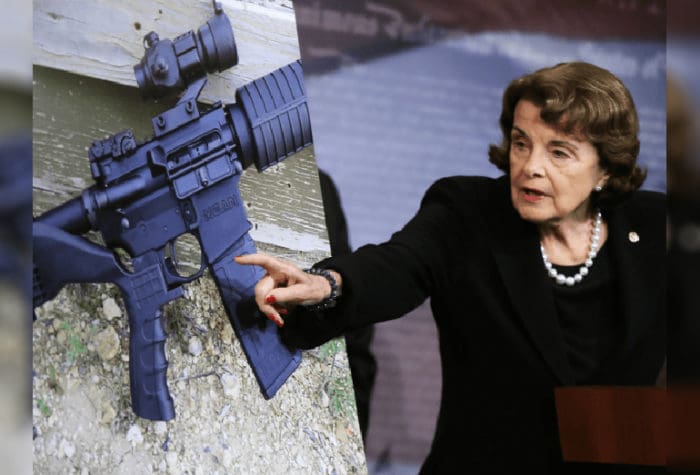After a psycho — there’s really no more accurate way to describe him — shot 40 people, killing 21 of them in San Ysidro, California McDonald’s in 1984, Assemblyman Art Agnos had this to say:
“The only use for assault weapons is to shoot people,” Agnos told the Assembly Public Safety Committee in June 1985. San Jose Police Chief Joseph McNamara concurred. “These are weapons of war,” he said. “They are made to kill people, and they are all over California. There is no legitimate use for these. Nobody hunts deer with them.”
And the civilian disarmament industrial complex has been using some variant of the same argument ever since, to various degrees of effectiveness. It didn’t matter that the shooter that day in 1984 used a 9mm handgun, a shotgun and an Uzi 9mm carbine. As far as anyone who wanted fewer firearms in the hands of Americans was concerned, these were “assault weapons.”
Reason’s Jacob Sullum does a nice job of using history and facts in the service of explaining the “assault weapons” phenomenon and the efforts to regulate them, for whatever good it does.
Although “assault weapons” fire no faster than any other semi-automatic, such as a Glock 19 pistol or a Ruger 10/22 hunting rifle, politicians routinely conflate them with machine guns, which have not been legally produced for civilians in the United States since 1986. Prohibitionists like Feinstein argue that “assault weapons” are good for nothing but mass shootings and gang warfare, despite the fact that only a tiny percentage of these guns are ever used to commit crimes. They say these firearms are “weapons of choice” for mass shooters, who are in fact much more likely to use handguns, and claim they are uniquely deadly, even though the category is defined based on features that make little or no difference in the hands of a murderer.
All true. So? It’s not like the gun-grabbing industry is deterred by little inconveniences like facts. They have emotion on their side.
Josh Sugarmann, founder and executive director of the Violence Policy Center, laid out this strategy of misdirection and obfuscation in a 1988 report on “Assault Weapons and Accessories in America.” Sugarmann observed that “the weapons’ menacing looks, coupled with the public’s confusion over fully automatic machine guns versus semi-automatic assault weapons—anything that looks like a machine gun is assumed to be a machine gun—can only increase the chance of public support for restrictions on these weapons.”
We can argue the details ’til we’re blue in the face. Hell, we have. Unfortunately, that ship has long since sailed. As a result, we now have a smattering of state-level “assault weapons” bans. The dearly departed Clinton federal ban expired way back in 2004. You know, the one that had precisely zero effect on “gun violence.”
There is little evidence that the “assault weapon” ban had an impact on gun deaths. “We cannot clearly credit the ban with any of the nation’s recent drop in gun violence,” University of Pennsylvania criminologist Christopher Koper and two co-authors wrote in a 2004 report commissioned by the National Institute of Justice. “There has been no discernible reduction in the lethality and injuriousness of gun violence, based on indicators like the percentage of gun crimes resulting in death or the share of gunfire incidents resulting in injury.” They concluded that “should it be renewed, the ban’s effects on gun violence are likely to be small at best and perhaps too small for reliable measurement.”
You don’t need Ivy League researchers to tell you why. Rifles — particularly those even loosely defined as “assault weapons” — are virtually never used in the commission of crimes. And even though they’ve been used in some high-profile mass shootings like Aurora, Sandy Hook and Parkland, even that’s unusual.
Contrary to the impression left by press coverage highlighting scary-looking rifles, handguns are also the most common choice for mass shooters. A Mother Jones review of mass shootings from 1982 through 2012 found that 66 percent of the weapons were handguns, while just 14 percent would qualify as “assault weapons” under the definition used in Feinstein’s 2013 bill.
The Diane Feinsteins of the world are nothing if not determined. The obvious answer to that problem: broaden the definition. And Feinstein did exactly that in the latest iteration of her gun-grabbing, windmill-tilting effort she introduced last fall.
Feinstein no longer thinks we need to worry about bayonet mounts, but she is now sounding the alarm about the ominous barrel shroud, a covering that protects the shooter’s hand from the heat generated by firing a rifle. She also has added rocket launchers to the equally fanciful grenade launchers as prohibited accessories. Crimes committed with rifle-mounted grenade or rocket launchers are about as common in the United States as crimes committed with rifle-mounted bayonets.
We lost the language battle almost 35 years ago. The question now is, will we lose a lot more than that. Given the broad interpretation of the Heller decision, its “common use” language and the Court’s reluctance to hear any appeal of bans upheld by lower courts, Heller has come to mean very little.
That highly deferential approach (by the Supreme Court) should alarm anyone who values the constitutional right to armed self-defense. “If a broad ban on firearms can be upheld based on conjecture that the public might feel safer (while being no safer at all),” Thomas wrote, “then the Second Amendment guarantees nothing.”
